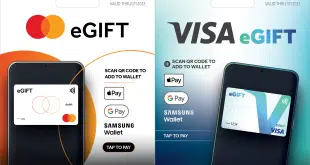Are you considering the advantages of digital card issuing? You can be sure your competitors are.
People are permanently anchored to their mobile devices today. The average American spends more than five hours on their device each day, checking their phone on average 96 times, or approximately once every 10 minutes.
The concept of digital is an extension of who we are, and it has been suggested—only half-jokingly—that Maslow’s Hierarchy of Needs should be updated to include “Wi-fi” alongside “food” and “shelter”.
It’s not hard to see why. We can now go into our Spotify app, find practically any song that has ever been recorded, and start listening to it in a matter of seconds. Or order and receive food via DoorDash, GrubHub, or Uber Eats. So it is understandable that few people have much tolerance any longer for experiences that take days to complete.
Given we are constantly digitally connected, the idea that we must stare longingly out of the window at our mailbox for a new card to arrive seven to 10 days after an interruption in card usage is incredibly frustrating and archaic.
Fiserv research has found that cards are the most preferred form of payment for all purchase categories—from meals at a restaurant, to purchasing event tickets to shopping at a grocery store. Consumers also perceive cards as the fastest and most convenient form of payment.
Little wonder, then, that reliance on payment cards means cardholders are highly receptive to using mobile and digital capabilities to obtain a new card. The same Fiserv research shows that 59% of debit card users expressed interest in receiving a new card directly on their smart phones and internet-enabled devices, rather than enduring the seemingly interminable wait for the card to arrive via mail.
Push to Digital
The appeal of digital issuance is obvious when we examine a day in the life of a typical cardholder. They open a new account or report a card as lost or stolen. They intend to use their debit card when they visit the grocery store, fill their vehicle with gas, and make online purchases.
With digital issuance, cardholders receive a text message directing them to a Web page where they can view their new digital card, push to Apple Pay or Google Pay, set their PIN, register for online banking and /or download their mobile-banking app.
Once the cardholder pushes their card to the wallet, either through the Web or an app, they are ready to begin transacting—and are spared a great deal of stress and inconvenience waiting for a physical card to arrive in the mail.
In an alternative scenario, a cardholder is traveling and realizes their card is missing. They call to report their card lost immediately but, as they are traveling, they are unable to receive an instantly issued card. However, instead, they can go into their mobile-banking app and view their new digitally issued card. They push that card to their preferred wallet. Or, if they do not have the mobile-banking app downloaded, they can click on the text message to get started.
Merchants are increasingly pushing for more segments to become more comfortable with digital card experiences, as well. These are cases where one has to store a card with a particular merchant to pick up groceries curbside or check out with the digital wallet.
Creating willingness among consumers is all about giving them the information they need when they need it, and reducing or eliminating the need to make a call or to step into a location. Issuers should be constantly identifying service experiences with the highest volume, and work to push these to the digital domain. Cardholders want convenience and ease of use. Retention of the relationship will be driven by how easy it is to manage that for the consumer.
Three Considerations
It can be overwhelming for a lot of issuers, especially if they have not prioritized their technology stack recently, to support the new digital paradigm. But some potentially
difficult decisions need to be made to compete with the digital experiences that fintechs, retailers, and other institutions are bringing to fruition. Inaction could create a share-of-wallet and market-share challenge.
Here are three things issuers should be thinking about now.
- Think about modernization of the experience not as an opportunity to contain expenses in terms of reducing head count, but as a way to be more deliberate about allocating those resources to more impactful activities. These actions include taking your valued staff away from tasks that require no innate intelligence and focusing human involvement on creating the type of experience that engages and retains customers or members.
- Understand who your competition is—and that it is no longer (solely) restricted to the other financial institutions in your peer group. In terms of digital experiences, it is everything else consumers are doing on their device. How quickly they can make a purchase on Amazon? Or download the Nordstrom app, pick out a new outfit, and pick it up curbside in moments, with about 10 seconds of human interaction total.
- Focus on infrastructure. The first step is to enable all cards for digital wallets. If tokenization is not enabled, you have short-circuited the engagement opportunity with your cardholder. There are so many experiences that start with the secure tokenized capabilities now in the app. The ability to add your card to a DoorDash purchase and use the Buy with Apple Pay button is predicated on the fact a card is eligible to be put into Apple Wallet or into Google Pay.
By offering digital cards, issuers can strengthen cardholder relationships and enhance loyalty by creating and delivering a simple, convenient and—most important of all—familiar payments experience. As the demand for touch-free transactions grows, digital issuance enables contactless payments while creating a memorable digital experience that enhances brand loyalty.
Consumers demand solutions that align with their fast-paced lifestyles. With digital issuing eliminating the wait for plastic to arrive, they feel empowered.
—Jeri Scheel is senior director, digital strategy, at Fiserv Inc.





